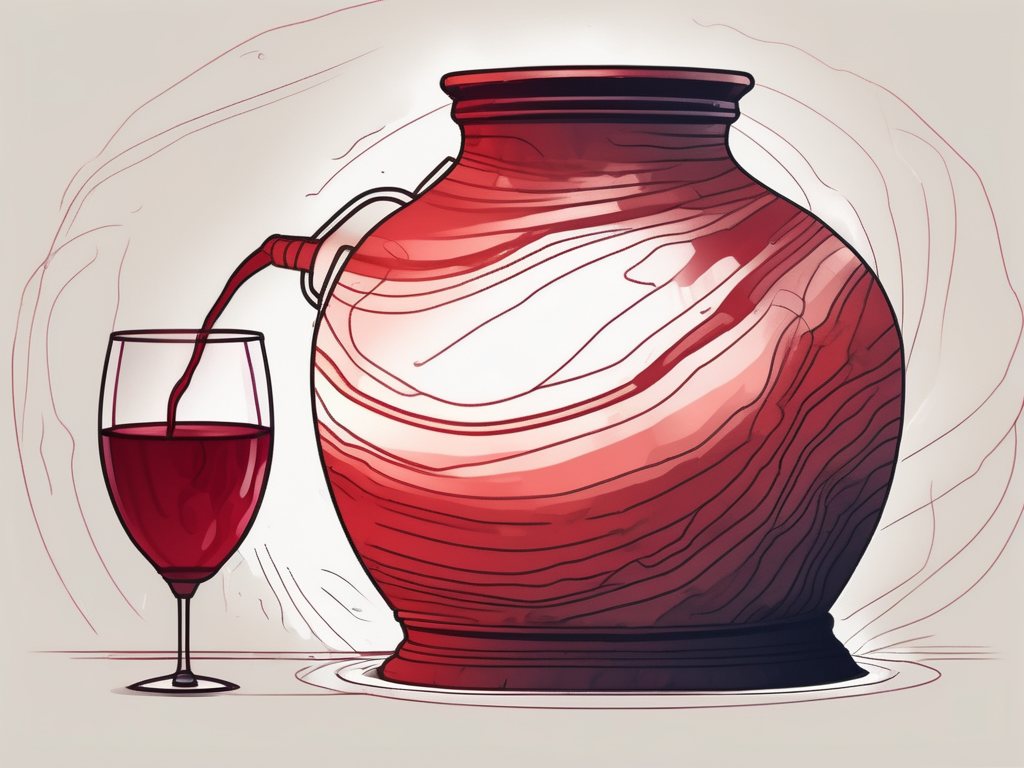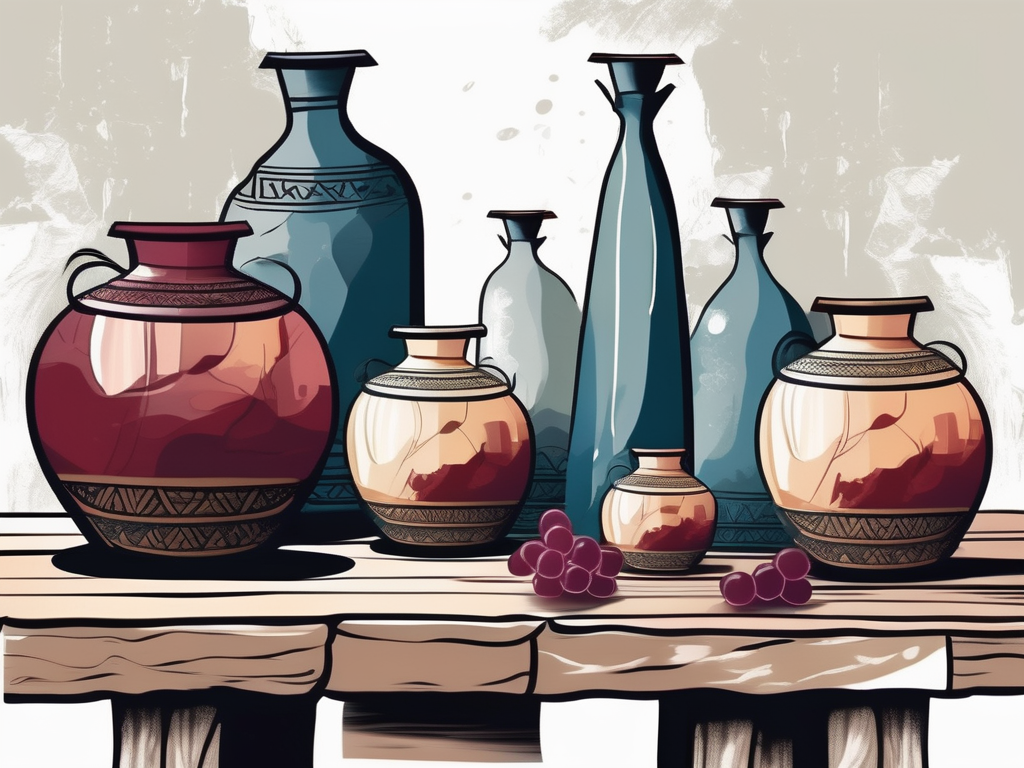The story of Jesus turning water into wine is one of the most intriguing and miraculous accounts in the Bible. It not only reveals Jesus’ divine power but also carries significant symbolism and theological implications. This article delves into the mesmerizing details of this miraculous event, exploring its biblical account, theological interpretations, cultural and historical context, influence on Christian beliefs, and modern perspectives, including scientific attempts to explain this extraordinary phenomenon.
Understanding the Miracle: Water into Wine
The Biblical Account of the Miracle
The Gospel of John recounts the story of Jesus’ first public miracle, which took place at a wedding in Cana. Jesus and his disciples were invited, along with his mother, Mary. As the celebration was underway, the host ran out of wine. Distressed by the situation, Mary turned to Jesus for help. Jesus, filled with compassion, looked upon the guests and knew that this was an opportunity to reveal his divine power.
With a gentle smile, Jesus instructed the servants to fill six stone jars with water, each with a capacity of about twenty to thirty gallons. The servants, curious yet obedient, hurried to fulfill his command. As they poured the water into the jars, a sense of anticipation filled the air. The guests watched with bated breath, unaware of the miraculous transformation that was about to take place.
And then, as if touched by an invisible hand, the water within the jars began to change. It shimmered and swirled, its color shifting from clear to a rich, deep crimson. The room was filled with awe and wonder as the water miraculously transformed into the finest wine, surpassing any earthly vintage known to man. The guests, who had been resigned to a shortage of wine, were now blessed with an abundance that surpassed their wildest dreams.
Theological Interpretations of the Miracle
The miracle at the wedding in Cana holds various theological interpretations, each shedding light on the profound significance of this event. One viewpoint sees it as a sign of Jesus’ transition from his private life to his public ministry. By performing a miracle that symbolizes abundance, joy, and celebration, Jesus reveals his purpose to bring spiritual fulfillment and transform lives.
Others interpret the miracle as a testament to Jesus’ divine power and authority. It showcases his control over nature, indicating that he is indeed the Son of God. This interpretation aligns with Jesus’ overarching mission of demonstrating his divine nature through his miracles. It serves as a reminder that Jesus is not just a mere mortal, but a divine being with the ability to transcend the limitations of the physical world.
Furthermore, the miracle at the wedding in Cana highlights Jesus’ compassion and concern for the needs of others. He could have simply ignored the host’s predicament, but instead, he chose to intervene and provide a solution. This act of kindness and generosity reflects Jesus’ character and his desire to bring joy and abundance to those in need. It serves as a reminder that Jesus is not only a powerful figure, but also a loving and caring Savior.
Moreover, the miracle at the wedding in Cana foreshadows the ultimate sacrifice that Jesus would make for humanity. Just as he transformed water into wine, he would later transform the world through his death and resurrection. The miracle serves as a glimpse into the divine plan of redemption, where Jesus would offer himself as a living sacrifice to bring eternal life to all who believe in him.
In conclusion, the miracle at the wedding in Cana is a profound event that holds deep theological significance. It reveals Jesus’ divine power, his compassion for others, and his ultimate mission to bring spiritual fulfillment and transformation. This miracle serves as a testament to the extraordinary nature of Jesus and his ability to bring joy, abundance, and eternal life to all who seek him.
The Significance of the First Miracle
The first miracle performed by Jesus, the transformation of water into wine, carries deep symbolism that resonates throughout the Bible. Wine, often mentioned in biblical texts, represents joy, abundance, and the overflowing blessings of God. It is a symbol of celebration and a reminder of God’s goodness. By turning water into wine, Jesus not only provides a practical solution to a wedding feast dilemma but also symbolically represents a new era.
In this miracle, Jesus replaces the old law with grace. Just as the water is transformed into wine, Jesus transforms the rigid legalistic approach of the old covenant into a new covenant founded on grace and love. This act foreshadows his ultimate sacrifice on the cross, where his blood would establish the new covenant, bringing salvation and eternal life to all who believe.
Symbolism in the Miracle
The symbolism within this miracle extends beyond the transformation of water into wine. It serves as a powerful metaphor for the transformative power of Jesus in the lives of individuals. Just as water is essential for physical life, Jesus’ presence and grace are essential for spiritual life. Through this miracle, Jesus demonstrates his ability to bring forth abundant blessings, joy, and spiritual transformation in the lives of those who believe in him.
Furthermore, the act of turning water into wine at a wedding feast holds profound significance. Weddings are often seen as a symbol of unity, love, and the beginning of a new chapter in life. By performing his first miracle at a wedding, Jesus emphasizes the importance of his presence in the union of two individuals. It highlights his desire to be an active participant in our lives, bringing joy, abundance, and blessings to our relationships and celebrations.
The Role of Mary in the First Miracle
Mary, the mother of Jesus, played a significant role in the first miracle at the wedding in Cana. As a loving and attentive mother, she noticed the need for a miracle when the wine ran out. Mary’s interaction with Jesus during this event showcases her faith, trust, and understanding of her son’s divine nature.
When Mary brought the need for a miracle to Jesus’ attention, he initially responded by stating that it was not yet his time. However, Mary’s unwavering faith and adherence to Jesus’ authority led her to instruct the servants to do whatever Jesus commanded. Her trust in her son’s capabilities and her belief in his ability to perform miracles demonstrate the importance of faith and obedience in witnessing the workings of divine power.
Mary’s role in this miracle also highlights her unique position as the mother of Jesus. As the one chosen to bear the Son of God, Mary’s presence at the wedding in Cana signifies her participation in the beginning of Jesus’ public ministry. Her presence serves as a reminder of the importance of family, relationships, and the blessings that come from honoring and including God in our daily lives.
In conclusion, the first miracle performed by Jesus holds great significance and symbolism. It represents the ushering in of a new era, the transformation of the old law into grace, and the abundant blessings that come from having faith in Jesus. Mary’s role in this miracle exemplifies the importance of trust, obedience, and the power of a mother’s love. The symbolism and lessons found within this miracle continue to inspire and guide believers today.
The Cultural and Historical Context
The cultural and historical context surrounding the topic of wine in ancient Jewish culture is incredibly fascinating. Wine held significant cultural and religious value during this time, playing a crucial role in various aspects of society. It was not just a beverage but a symbol of joy, abundance, and hospitality.
When we delve into the ancient Jewish culture, we discover that wine was deeply intertwined with celebrations and special occasions. It was an essential element in wedding festivities, where it symbolized blessings and prosperity. The presence of wine at a wedding was seen as a sign of good fortune and divine favor.
Weddings in ancient Jewish culture were grand events that lasted several days, showcasing the importance of communal celebration. The wedding at Cana, which holds historical significance, provides us with a unique perspective into the societal norms and customs of first-century Palestine.
By understanding the cultural importance of wine in this context, we can truly appreciate the significance of the miracle that took place at the wedding at Cana. It was not merely a miraculous act of turning water into wine, but a profound affirmation of the institution of marriage and a demonstration of Jesus’ desire to engage with people in their everyday lives.
Wine in Ancient Jewish Rituals
Wine played a central role in various religious rituals and ceremonies within ancient Jewish culture. It was used during the Passover Seder, where it symbolized the blood of the sacrificial lamb and the liberation of the Israelites from slavery in Egypt. The act of drinking wine during the Seder was a way to commemorate and relive the miraculous events of the Exodus.
Furthermore, wine was an essential component of the Temple rituals, particularly during the offering of sacrifices. It was poured as a libation, symbolizing the pouring out of one’s devotion and gratitude to God. The aroma of the wine wafting through the air was believed to be pleasing to the divine presence.
Even in everyday life, wine held a special place. It was often consumed during meals, enhancing the dining experience and fostering a sense of conviviality. Sharing a cup of wine was seen as a gesture of friendship and hospitality, strengthening social bonds and creating a sense of unity among individuals.
The Significance of Wine in Jewish Literature
Wine’s cultural and religious significance in ancient Jewish culture is also evident in various literary works. In the Hebrew Bible, wine is frequently mentioned as a symbol of joy, abundance, and divine blessings. It is described as a gift from God, bringing gladness to the hearts of those who partake in it.
Additionally, wine is often used metaphorically in Jewish poetry and wisdom literature. It represents the richness of life, the sweetness of love, and the pleasures of the senses. It is a symbol of celebration and a reminder of the beauty and goodness found in the world.
Through exploring the cultural and historical context surrounding wine in ancient Jewish culture, we gain a deeper understanding of its significance in the wedding at Cana. The presence of Jesus and his disciples at this grand celebration speaks volumes about his desire to connect with people on a personal level and affirm the importance of marriage in society.
The Miracle’s Influence on Christian Beliefs
The Miracle and the Eucharist
Many Christians draw a connection between the miracle of turning water into wine and the sacrament of the Eucharist. Just as Jesus transformed water into wine, he later turned wine into his blood during the Last Supper, conveying his sacrificial death and the institution of the sacrament. This parallel enhances the understanding of the miracle’s importance in Christian faith and practice.
The Miracle as a Testament of Jesus’ Divinity
The miracle at the wedding in Cana serves as yet another testament to Jesus’ divinity. It demonstrates his capacity to perform extraordinary acts that transcend the laws of nature. Believing in this miracle affirms one’s faith in the power and authority of Jesus, strengthening the foundation of Christian belief.
Modern Perspectives on the Miracle
Scientific Attempts to Explain the Miracle
While the miracle of turning water into wine defies scientific explanation, some have made attempts to rationalize it. From natural fermentation processes to certain chemical reactions, various theories have been proposed. However, it is important to recognize that the true essence of this miracle lies beyond the realm of scientific comprehension.
The Miracle in Contemporary Christian Thought
Contemporary Christian thought encompasses diverse perspectives on the miracle at the wedding in Cana. Some see it as a testament to Jesus’ power to transform and restore, offering hope and renewal in the midst of life’s challenges. Others emphasize the importance of faith and obedience in experiencing the miraculous power of God in their lives.
In Conclusion
The account of Jesus turning water into wine is a captivating tale that encompasses profound theological, cultural, and historical significance. It reveals not only Jesus’ divine power but also provides insights into the deep symbolism and the influence this miracle has had on Christian beliefs. Exploring the modern perspectives on this miracle reminds us of the importance of faith, obedience, and the willingness to recognize and embrace the extraordinary works of God in our lives.












